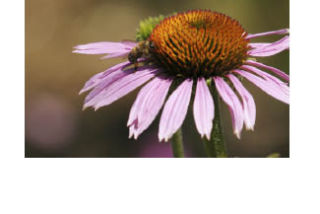A bug is a bug, is a bug, is a bug … until you discover that the bug is a helper! There are many beneficial insects that rove our gardens, helping us to have an area where poisons need not be used. The challenge is to learn which bugs are good and which are bad. There are many more than bees.
The hardest part to learn is that some bad bugs are necessary to invite good ones into our gardens. Take aphids, for example. There are so many kinds but most are green, beige or black, and they hang out on our favorite flowers: roses, pansies, nasturtiums or lilies, as well as many others. Their major predator is the ladybug and her young, the alligator-like, orange-striped black larva. There is another ladybeetle larva that looks like a fat, fussy white mop about ¼ inch long. If you rush for the poison at the infestation point to kill off the aphids, you will also kill off the ladybugs and her larva. These insatiable predators will make short work of the aphids, but there is a lag time.
There are several other beneficial insects that we can attract to our gardens. The delicate green lacewing looks something like a ½-inch to ¾-inch long aphid with golden eyes. They lay the most interesting eggs at the end of threadlike stalks in clusters on leaf surfaces. Preying Mantis are very interesting to watch as they pursue their prey, but probably are minor predators. If you have a still pond you will probably have dragonflies. These lovely flashes of light devour mosquitoes and other flying insects at both their larval stage and on the wing.
Most gardeners have experienced turning over the soil and exposing a large black beetle. This is a good guy! They prey on slug eggs and small slugs, among other things. But perhaps the most common and successful predators in the garden are the various kinds of spiders. They are general feeders and while they do consume good insects, their voracious appetites control many pests.
Others work by parasitizing their prey. The tiny Tachinid flies lay their eggs on sawfly larvae, caterpillars and beetle larvae, basically eating them alive. The ¼-inch long Trichogramma wasp (it won’t sting) does the same thing on moth eggs. If you see a caterpillar with a lot of little white bumps on it, leave it! It is the “host” for a controlling insect.
These lovely beneficials can be attracted to your garden by giving them plants that they can reproduce on or that their hosts are attracted to. Almost any of the daisy (Margarites, Shasta Daisy, Oxeye Daisy) or dill families (Sweet Cicely, Yarrow, Dill, Cilantro) host a number of beneficial insects. Sweet Alyssum is well known for attracting Tachinid flies, and planting a lot of Alyssum around roses will keep aphids away. Having many different plants blooming over a long time gives the insects a chance to move from one flower to the next as the season progresses. Bees can be encouraged, too — both native and honeybees — by planting diverse flowers for their nectar.
If all else fails to attract predators to your garden, many are available at local nurseries, even at the box stores. There is also a great online resource for predators grown here in the Pacific Northwest. Evergreen Growers are located in Oregon, and you can order many of the insects mentioned on their Web site, www.evergreengrowers.com, under the “Predators” link. They are affordable and will arrive within a day or two.
Linda Stephens-Urbaniak can be reached at Lindagardenlady@speakeasy.net.


